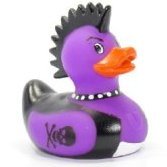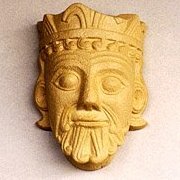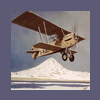Search the Community
Showing results for tags 'VacForm'.
-
It is now just over four months until Telford. I have been thinking about what to take with me this year, as well as the two P.8's I am building. I have been meaning to build this kit for a while, but never had the motivation to do so until now. So, what am I building? One of these, but more specifically, one of these. To do so, I am using these items There will also have to be a bit of scratch building for the cockpit interior, so that will be fun The contents of the box Just as well that I am using a different canopy, going by the colour of the ones supplied in the box. Work has started, I sprayed primer over the parts. The idea is that when I cut the parts from the backing sheet, I will be able to see how much plastic there is to remove, as the parts will be grey and the excess white. This will not be 100% accurate, as I have built this kit before, and I found that the fuselage halves are not the same depth, so something to watch out for. This was my previous build Gondor
-
Evening all With the waters now settled on my 1/32nd Sunderland build, I thought it about time to start another big vacform... well, to be exact, continue with a long stalled project from a few years ago. I started this Tigger (ex ID Models) vac of the Short Stirling about 5 or 6 years ago and ran out steam, and it had been consigned to the loft since I boxed it up and got distracted with something else. A conversation a few months ago with @Cees Broere about the Stirling led him to offer me his also-stalled project with the promise that I'd continue his excellent start and get it finished - an offer I grabbed with both hands considering the excellent start he's made to the cockpit interior which is my least favourite part of building models such as these. I was in the Netherlands with the family last week, to I popped in to see him and picked the beast up - thanks again, Cees! I've since been for a rummage in the loft and dug my kit out, and now combining the two means I'm confident that I can finally get the job done. So here's where we're at... This is how far Cees had got with his fuselage: And how far I'd got with mine, which as you can see is not very: Cees is a wonderfully talented modeller and scratch-builder and has made some beautiful progress with the cockpit area - a great base for me to continue working on: Here are the wings I'd started a few years back - at the time I decided to open up the wing and reveal some of the interior detail. I like to think I've improved my scratch-building skills since then so instead I'll use the wings from Cees' kit and start again: That's a lot of plastic! Here are the other parts that include the engine nacelles, stabs and fin, etc - pretty basic stuff but perfectly workable: Cees has kindly given me a supply of Bristol Hercules engines as well as various HK Lancaster turret parts which will come in very useful and reduce the amount of scratch-building needed in the future: So... with both my earlier work and Cees' more recent efforts, I certainly have something Stirling shaped which is a great start (or point to continue from) for this project so I'm ready to dive back in! The plan is to do a late MkIII variant with open bomb bays and a full bomb-load - squadron and specific aircraft yet to be decided. I'm really not looking forward to tackling the landing gear, but that's a problem for another day. Updates are likely to sporadic as the new school term starts imminently but I'll do my best to keep those interested updated on my progress. All the best, Tom
- 317 replies
-
- 54
-

-

-
- Tigger Models
- vacform
-
(and 1 more)
Tagged with:
-
Afternoon all, Only my second completion so far this year, and it's the Welsh Models Boeing 737-200Adv in 1/72nd scale: This is a mixed-media kit from Welsh - you get a crisply moulded vacform fuselage, with resin fin, stabilisers, wingbox and wings, engines and cockpit interior. There are nicely cast white metal details such as the landing gear and wheels, and you also get a vacformed clear part for the canopy if you're not planning on using window decals: It's a kit that goes together very quickly, and once you've cut out and rubbed down the vac fuselage, it's more or less built in a couple more sessions. Fit was generally good, with the only problem I encountered being a warped bottom section (quiet at the back!) which some Milliput soon took care of: I decided to spruce it up a bit and purchased the very eye-catching MetroJet scheme from Draw Decals, as well as a window decal set from Authentic Airliners. Xtracolor enamels were used throughout, with some light weathering using Mig pastels. All in all a fun and quick build, and if you're thinking of dipping your toes into vacform and resin kits, I highly recommend it. Tom
- 11 replies
-
- 54
-

-

-

-
- Welsh Models
- Boeing 737
-
(and 1 more)
Tagged with:
-
You may have noticed a Falcon 900 in the inspiration gallery which I finished back in 2015 (started in about 2005!). Well it's no longer in my collection so I need to add another which I will be hanging on to. The kit The bits The very comprehensive instructions The decals (which I won't be using) The aircraft (taken at Denver in the mid 90s on a training flight to the USA (my photo) Hopefully I don't botch this one up too much!
-
With the school Christmas holidays upon me (the perks of being a teacher!) I have had some free time this week so with interest/mojo waning on other builds, I thought I’d dig this out of the stash and make a start… The Consolidated Privateer was developed from the venerable B-24 as a long range maritime patrol aircraft in the letter stages of WWII, and served up until the mid-1950s. Some even soldiered on into the late 1990s as firebombers, such was its longevity! One still flies in the US on the airshow circuit, in its final US Coast Guard colours. (Picture courtesy of Wiki) This aircraft is yet to be replicated in kit form in 1/48th, so the only option is a conversion. Bill Koster is well known amongst us vacform aficionados for his beautifully done kits and conversions - I had the pleasure of converting the Monogram 1/48th B-17 into an earlier ‘shark tailed’ Fortress a few years back - so when I was offered this set for a very fair price (they’re like hen’s teeth these days!) to convert the B-24 into a Privateer, I couldn’t resist. In the last couple of days I have carefully removed the new fuselage parts from their backing sheets and sanded them to the correct thickness, as well as removing the various windows and side blisters: The large side blisters/turrets looked to be tricky, so I’ve spent some time working on these, adding the resin gun mounts and getting them ready for spraying. I’ve already fitted the clear domes, as I wanted to get these done before I went any further to ensure a good fit and bond. I needn’t have worried as in hindsight, they fitted perfectly! It was then time to follow Koster’s cutting guide and mark up the sacrificial B-24 fuselage: Before some careful cutting… As you can see, only the centre section of the fuselage containing the wing and bomb bay will be used: A Privateer is quite a lot bigger than the Liberator! The front and rear sections have been joined with success - such is the quality of the conversion parts that the fit is excellent and only minimal clean up will be needed. Bill Koster was a clever man indeed! I did wonder why a whole, one piece, fuselage wasn’t provided, but then realised that the beefy and heavier injection molded B-24 wing will need to be added. With the original wing root in place, as well as the thicker plastic, it’ll mean a very strong centre section… there’s clear method to the madness. I’m currently working on adding the Monogram interior to the new fuselage, so will post some additional pictures when there’s been some more notable progress - which is likely to be sporadic as I do like to flit between builds! More when there’s more… All the best, Tom
- 24 replies
-
- 38
-

-

-

-

-
Back in the days before the internet , when we had to look at books for refferences , after market was virtually nil , an amazing man produced a quite limited kit of the Lightning in 1/32 scale. OK Yes it was Vacform , but it was superb. I was a teenager and was looking through scale aircraft modelling magazine and saw an ad for said kit. I had to have one. My Dad drove me from Essex to Maidenhead to get one from the Man himself , Frank Brown. He was a very friendly man. He showed me some built up ones and also the most gobsmackingly good solid resin fuselage with white metal inserts. I believe it was a master for the kit. No idea what resin it was but it was glass smooth and dark blue.Fantastic. The kit was built and displayed in my room before finally getting destroyed years later somehow. I have built a few over the years , i even started one using the Aires bits for the Trumpeter kit , but sold it on to a friend before finishing it. I now want to build another one. One came up on the web for a good price and it arrived today. All is good and the kit it as beautiful as the first time i saw it. Unfortunately the canopy is very yellow. Not to worry i will attempt to make a vac form machine and make a new one. I will post photos of the kit this evening.
- 52 replies
-
- 12
-

-
Following the success of the Hunter, Hawker designed the supersonic P1121 which was substantially larger. The first aircraft was under construction when the project was cancelled but the forward fuselage has survived and is in storage at RAF Cosford. Despite the size the kit was easy to build and I finished it in a pale green scheme similar to the Hunter prototype. Thanks for looking. Steve
- 27 replies
-
- 53
-

-
- Project-X/Maintrack
- 1/72
-
(and 1 more)
Tagged with:
-
I have been avoiding the big Sanger 1/48 Avro Shackleton in my stash for a while now. I picked it up on eBay a few years back & then realised it was an MR2 version and I wanted the AEW2. So some great service from Sanger provided me with the correct bits to build the one I wanted. The Martine Reconnaissance version had been retired before I started going to airshows, although I think the Duxford one had not long arrived when I first went around 1976. The AEW2 all over grey Shackletons were still sometimes seen around airshows until the late 80s. I can remember the sound of those 4 Griffons, and one memorable time seeing one flying with the BBMF Lanc. Anyway, the kit. These are the two fuselages and wings with a 1/48 Airfix Lightning for scale The detail isn’t actually too bad And the white metal parts. As I said I have both MR and AEW parts. So 24 separate prop blades & vacform hubs. Nice and easy then! This is not going to fall together over night! I usually do lights & motors but even though technically a modified rc helicopter would give contra rotating props, I think the white metal blades would fly around the room! Might still squeeze in some lights though
- 364 replies
-
- 25
-

-
It's a while since I did a vacform and I have to admit I really enjoy them. So this is a bit of ASMR for me, but also a bit of a chance to do some proper research. I'll go into the history of this esoteric type at a later date, but suffice to say there's not a lot of information out there. And what has been published is sometimes incorrect too! So this is the kit: an old-school Rareplanes 1/72 issue titled, "Douglas O-43 Observations", the plural indicating that various options are possible with the kit. It dates from 1976, which means it's 47 years old, and since this looks like the first issue of it (later versions had card instructions; mine has photocopied paper), I think my kit probably dates from 1976 too. Typical Rareplanes - nicely-moulded and with some detail too. That wing is awesome! Two fuselages and dual parts for other items: this kit will allow you to make an O-43 and an O-31C out-of-the-bag. Being somewhere on the spectrum, I'll be doing neither. And some nicely-damaged transparencies. Hardly surprising since it's been somewhere in a bag since Abba did Eurovision. And these are the instructions. Quite quaint really. When was the last time you used bamboo in a model build? There is ZERO aftermarket for this kit, so a great deal of scratch-building lies ahead. However I have purchased Starfighter Decals' set 72-164, which not only includes the right size national insignia but also - major win - the squadron badge I want to use. More on that later too. And I did want to make sure my interpretations of colours on black-and-white photos were correct, so I shall be using this very useful little gem for reference: published in 2003 and not that easy to come by now. I did have a Squadron/Signal Dana Bell book on USAAC colours and markings but typically can't locate it now. If I do find it I'll post the reference too. So that's the deal. I'll update as soon as I've cut some stuff out. Might need to do a quick rundown on the aircraft itself before that.
-
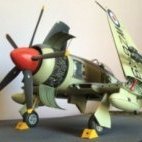
DYNAVECTOR GANNET photos updated & wheel chocs
CJP posted a topic in Ready for Inspection - Aircraft
I have finally completed this Dynavector Fairey Gannet AS1 - I wanted to get it done before AIRFIX released their 1/48 Gannet which I believe is due the end of October this year. The subject of the model is a Fairey Gannet WN456/884 NW based at Nowra NSW with 724 Squadron - according to the ADF SERIALS website this aircraft ditched off HMAS Melbourne on 23/03/1965. This is my second Dynavector vacform & again I found it surprisingly easy & enjoyable to build once all of the parts were cut out. The build involved a lot of scratch building but it was quite rewarding to do this - I put a lot of detail work into the cockpit and wing folds as shown on the WIP link https://www.britmodeller.com/forums/index.php?/topic/235122800-dynavector-gannet-as1/ The wing fold detail used the airfoil sections of the Airwaves etch filed to fit inside the wing opening but I did not use much else on the etch and scratch built the rest of the details. I used Airscale bevels and instrument decals for cockpit detailing & Eduard seat belt harnesses. Material mainly used were various profiles of Evergreen strip, sheet & Albion Alloys slide fit tubing. Home printed the lettering & codes on the Experts Choice clear decal sheet. 1/72 XTRADECAL sheet x72260 for the Australian kangaroo roundels which had some sizes suitable for 1/48 scale, otherwise my search for RAN Gannet decals proved fruitless. Paints were some very old XTRACRYLIC EDSG/SKY which still sprayed nicely & some other acrylics including Tamiya. Final coat was Testors clear dullcoat. References I used were - https://www.britmodeller.com/forums/index.php?/topic/234910632-fairey-gannet-xa334-royal-australian-navy/ https://www.thunder-and-lightnings.co.uk/gannet/walkaround.php https://www.net-maquettes.com/pictures/gannet-as-4-walkaround/ https://www.ulsteraviationsociety.org/fairey-gannet-ecm6-as4 Two new Gannet photos on updated base - the fuzzy patch near the rear cockpit is where a kit decal came off & has since been rectified. Below are some photos of the Breguet Alize and Fairey Gannet as requested by Massimo. Thanks for looking - now waiting to see the Airfix Gannet release! CJP -
I have had the Dynavector Gannet kit in my stash for some years intending to make it one day – the article in Cold War in January this year called "Gannet goings on" by Canberra Kid sparked my interest again with some nice drawings from manuals and news that Airfix are releasing a 1/48 AS1/4 Gannet. As a result I decided to start on my Dynavector Gannet now and try and try to get it made before the Airfix kit is released and distracts me. I had a look at some nice Dynavector Gannets by Rizzo & ianwau posted here in Britmodeller - https://www.britmodeller.com/forums/index.php?/topic/234918551-fairey-gannet-cod4/ https://www.britmodeller.com/forums/index.php?/topic/235101507-148-dynavector-fairey-gannet-as-1/page/3/ I had the old Airwaves etched wing fold set and was interested to see how it would look and Rizzo’s build was a good example of this - I decided I would trim the airfoil ribs down to fit inside the wing halves. I would also fabricate the hinge and pushrod mechanisms similar to what Rizzo did – the etched parts should help working out dimensions of the various bits. FUSELAGE I belatedly decided to do a WIP so unfortunately, I did not take many photos of the fuselage halves before I cemented them together other than sections where the cockpits & nose wheel bay go - The kit cockpit assemblies are quite nice and I added some extra detailing and some Airscale instrument dials and decals. I separated the rear operators seat back from the seat pan referring to photos. These photos show some of the extra details added with plastic card & copper wire. An internal bulkhead and the nose wheel bay were added prior to joining the fuselage. I cut the rudder away from the fin and added a rudder post for strength. Several test fits were done ensuring the cockpit assemblies, nosewheel bay & fuselage bulkhead all fitted snugly before gluing it all together. References I used included these - https://www.britmodeller.com/forums/index.php?/topic/234910632-fairey-gannet-xa334-royal-australian-navy/ https://www.thunder-and-lightnings.co.uk/gannet/walkaround.php https://www.net-maquettes.com/pictures/gannet-as-4-walkaround/ INNER WINGS I decided to scratch build new main wheel bays & try & replicate the internal structure which was built mainly in 30thou Evergreen sheet - the main spar was made from 60thou sheet shaped to the wing dihedral. T I glued an inner aerofoil section of Evergreen plastic about 2mm inboard of where the etch part will sit to provide an anchor point for push rods & cable/pipes if needed and also to prevent see through into the inner wing space. I used multi strand copper wire stripped from some fine household electrical cable to represent the hydraulic pipes and other cabling - My method of keeping the copper strands from fraying & falling apart is to solder the ends of each branch of the pipes once they have been separated into the various pipe runs I am trying to replicate. The wire was then carefully fed around the internal ribs and was and positioned referring to the walkaround photos - a couple of bottles in the wheel bay were made from sprue turned in a drill & copper wire piping added. photos above show mounting hole for main gear strut and extension to the strut with aluminium tubing to allow for the deeper wheel bay. INNER WINGFOLD The plastic outer edges at the inner wing fold break were thinned to about 0.5mm using the edge of a scalpel blade and the edges of the Airwaves aerofoil section were carefully filed holding the etch piece against a wooden block to prevent it from bending. The etched wing panels above before being separated and showing the thin green outer edge that I filed away so it fits inside the upper & lower wing halves – you have to take care doing this as the etch will bend easily. The etched aerofoil has been glued into place with CA and the flap end made from plastic sheet A test fit of upper & lower wing halves around the aerofoil section all held together by a rubber band. I really am enjoying all of the scratch building I'm doing on this model. So that's the Gannet started and hopefully it will progress steadily without too many hold ups CJP
-
My foray outside of my comfort zone is going to be a Sevans Dalek: Do not be fooled by that Beatties (how I miss them) price tag, I had to pay A LOT more than that on Evilbay for it, but not as much as some are asking for them. Even so, it’s still the most expensive kit I’ve ever bought. And it’s vacform! Inside the box are a selection of recognisably Dalek bits: Full disclosure, I have built one of these before. That one was a movie variant built when I was around 13 or 14 with an awful lot of help from my dad. Now at 42, I’m brave enough to tackle it on my own! The original was foolishly left in my ex-wife’s loft (I really should have double checked I’d got everything) and I’ve missed it greatly. A couple of years ago I got the itch to really make another, and stumbled on this place (specifically Nigel’s Heath’s amazing build) while looking into them. My rather enthusiastic re-entry to the hobby (and membership here) really is down to a desire to own a large Dalek again! While I will be using Nigel’s build for some tips, his build was the earliest version of the model and this one is (I think) the last version, with some substantial differences between the design of the kit. My previous one was different to both as well! The exact look/spec I’m going for is still being decided but the current thinking is: Late 70’s/early 80’s look NOT a TV or film used colour Possibly scratch building a movie-style claw Lighting the eye stalk & ears (I’ve also never added lighting to a model before) Scratch building a base showing off the anti-gravity spheres (though maybe that will be an addition at a later date) James
- 175 replies
-
- 23
-

-

-
The Vickers Valentia is the tenth 1/72 aircraft kit I've made since I restarted modelling in 2020. But it's the first vacform, and nothing really prepares you for that. Fortunately, JWM was already working on one and his Valentia K3160 WIP pages (https://www.britmodeller.com/forums/index.php?/topic/235109961-vickers-valentia-contrail-172/) provide a masterclass in tackling the idiosyncrasies of these Contrail kits from the 1980s. There are parts that don't fit well, scored lines that are almost invisible, parts so thin the plastic can even melt if the putty is exothermic, and ludicrously inadequate instructions. The kit needed a fair amount of scratch-building to prepare items that weren't in the box or to replace parts that were plain wrong for this aircraft. I was lucky to find an unopened box so I could see from the beginning where I'd need to improvise. So no complaints, some things you just have to learn. It can be difficult to find information on aircraft from the interwar period. Around eighty of these 'Type 264' Valentias were built, and none of them survive. However, I had a personal lead-in, as it were, as my dad had flown in one on the Khartoum-Nairobi route AND HE TOOK PHOTOGRAPHS. Working through his negatives from 1938 to 1941 was the starting point of all my recent builds. So here she is - K3604, code 'B', of 216 Squadron RAF, at Malakal in Sudan (now South Sudan), on Sunday the 8th of January, 1939, where they had a flat tyre on the rear wheel. p7_57_doublex by Sandeha Lynch, on Flickr Aircraft fabric paint on a black and white photo shows up as white under an equatorial sun. I was almost tempted to paint the body all white, but instead I picked a metallic paint and reduced the shine with around 20% satin white. IMGP0455x by Sandeha Lynch, on Flickr The ribs on the rear of the fuselage and on the wings below the engines are 0.5mm hemp cord, the same as used for model ship rigging. And following Jerzy's lead, I bought 1.5x2.5mm ABS strips for the main wing struts and used another 2mm rod for the exhausts. For the tail struts with a wider profile I took a couple of rods, glued them together, and filled the groove with putty. IMGP0448x by Sandeha Lynch, on Flickr The kit has Pegasus II engines as required, but there were no exhaust collector rings in the box. Instead, 1mm ABS rod was cut up and glued against a plastic ring cut from the body of an old Letraset ProMarker pen; the diameter and thickness were very close, and filing, putty, and paint did the rest. Antique Copper paint, some Plaid FolkArt acrylics I had - 20 years old but still good. I also had some 3mm brass tubing from another project I did 20 years ago which was a perfect sleeve for a 2mm prop shaft - I now have the smoothest running propellers ever. IMGP0481x by Sandeha Lynch, on Flickr Jerzy was also on point in removing the individual window sections and inserting one long strip of clear plastic with painted divisions - so much easier, though it was still tricky to keep the glass clean. The cockpit seats are small squares of ABS sheet in a stack, with an upright piece forming the back. I used grey and Cockpit Green on the interior. Seat belts and instrument panel are from a Kora Fairey Gordon kit I'd bought from LFModels two years before. Well, it's from the same period! IMGP0475x by Sandeha Lynch, on Flickr One of the undercarriage struts broke at the elbow when I was trimming off the flashing. It was such a weak point I reinforced them all by gluing the flat side to 1mm ABS sheet and then trimming them to a better shape. You don't want them to look too heavy of course, but the finished aircraft is no lightweight at 150g. Fortunately, the black injection plastic wheels were pretty good and just needed filing around the edge. The tail wheel may also have come from the Gordon kit, as my own version had used a skid. IMGP0467x by Sandeha Lynch, on Flickr I haven't added rigging to any of the biplanes I've built and without practice there can be no skill, so I wasn't about to try it with this model. Maybe next time. The original Contrail decals needed cleaning up as the glassine paper had stuck to them but they were tough enough to withstand a wet cotton bud. And a creative drop of paint was needed in converting the supplied K2340 decals to K3604 under the wings, the 2 taking on the role of a 6. Juggling the small code numbers around the tail was very tricky. The 'B' on the fuselage is in two sizes; an old ModelDecal '105' sheet was good for the nose and a Kits-World paint mask on a clear decal sheet did the rear. IMGP0474x by Sandeha Lynch, on Flickr Faults? Yes, quite a few in planning and assembly. There is a slight distortion at the tips of the wings. I used 1mm ABS sheet strips to reinforce the length inside but should have added more around the extreme edges - in some places the vacform wing plastic is probably no more than 0.3mm thick. Getting the fuselage cuts right for the angle of the lower wing to slot into was also difficult and needed Milliput packed in below. For contrast, this shot shows a Fiat CR.42 Falco I made a couple of years ago. Both 1/72. Who knows, they may have met in the skies above Sudan and Eritrea. IMGP0464x by Sandeha Lynch, on Flickr I started cutting out the parts in November '22 and worked on it in shifts. Challenging? Very. Satisfying? Immensely. IMGP0452x by Sandeha Lynch, on Flickr
-
This is the 1/72 Welsh Models Gulfstream G-IV built as a U-4 of the JASDF. The kit was built OOB with the addition of type-specific antennas and was started for the Turning Japanese GB last year. The decals are by Draw Decal A link to the GB thread is below. The U-4 Multi-Purpose Support Aircraft is a Gulfstream Aerospace Corporation business jet “GIV-SP” that has been refurbished to Japan Air Self-Defence Force (JASDF) specifications. The U-4 was introduced to JASDF in 1995 as a successor to the reciprocating twin-engine aircraft “B-65” which was mainly used for communication and personnel transport, and as a Multi-Purpose Support Aircraft. It is mainly used to transport personnel and small cargo and for training. In addition to the usual boarding door, there is a large cargo door for transporting emergency cases and goods on the right wing side. The GIV-SP utilizes its flight stability in high altitude and velocity of Mach 0.80 for liaisons in military operations, and to transport personnel and materials. Thanks to the quietness and comfort of the aircraft, it is also used to carry important personnel to remote areas in Japan in the event of disasters such as earthquakes, volcanic eruptions, and torrential rains.
-
Morning all, I was rummaging around in the loft earlier this week and stumbled upon this long-forgotten build from... 2015. Where has 5 years gone? To cut a long story short, I entered this as part of the non-injected group build and as usual ran of steam during the GB and never got it done. However, I've decided to give it some love and have since added the stabilisers and fins, added some resin engines (kindly donated by a fellow BM member years ago,) found some reasonably shaped air intakes for the top of the engines and given it a coat of primer: Untitled by Thomas Probert, on Flickr Untitled by Thomas Probert, on Flickr Lots of surface details to reinstate, but not too far off paint which is always good for the motivation. Tom
- 11 replies
-
- 25
-

-
- 1/72nd scale
- Sanger
-
(and 1 more)
Tagged with:
-
I have a lot of models in the "in progress" limbo, and I promised myself that I would finish a few ones soon. So, here's one from my big shelf of doom, the very interesting Supermarine-almost-to-be-called-Spitfire started more than 15 years ago. Remained in the same condition of main parts cut and sanded - until some time long ago he awoke from hibernation for the lower wing to be cut in sections. Fast forward to a week ago, when I decided to finish the damned thing. [/url] Here is a better photo of the parts: The kit instructions cover promises "...multi-view scale plans, picture and article references, colouring and marking details" - but none came with mine. [/url] I've found some references in my shelves. The 14-page chapter in "Spitfire, The History" together with the Putnam "Supermarine since..." provides a good history of the type, together with some photos and detail drawings. The Modellers Datafile provides two good detail photos of the aircraft in unskinned condition. Of course I grabbed all the photos I could find online - not many different from what I already had - but I decided not to be a nit picker with this one and concentrate on a fast build, possibly sacrificing some accuracy. I'm glad I did this way, as I'm almost ready to close the fuselage and assemble the main parts for painting. A week? A record for me since I returned to modeling! I hope to post details of the work done to date still today. And please feel free to comment and criticize. Carlos
- 10 replies
-
- 14
-

-
- Supermarine 224
- Rareplane
-
(and 1 more)
Tagged with:
-
Although it’s little known today, the North American O-47 was one of the major types in the inventory of the immediate pre-War US Army Air Corps, alongside the Curtiss P-36, Northrop A-17 and Douglas B-18. Developed concurrently with the NA-16 trainer, which evolved into the enormously successful Texan/Harvard family, together they constituted the first products of the fledgling North American Aviation. NAA had been formed initially as a holding company for the acquisition of various aviation-related businesses. When it obtained the assets of General Aviation (formerly American Fokker) and the small Berliner-Joyce company, the two were merged to create a new manufacturing enterprise, under the leadership of the visionary J.H. ‘Dutch’ Kindelberger and his right hand man, Leland Attwood. The O-47 was intended to replace the motley collection of ‘observation’ (reconnaissance) biplanes previously operated, which were numerically the largest category of aircraft in service with the the pre-War Army Air Corps, which still saw itself as primarily a WW1-style army-support force. This conservative thinking was soon shown to be outmoded, which cut short the O-47s career as a front-line aircraft. 239 of the O-47A and slightly improved O-47B were built and equipped largely the ‘Weekend Flier’ squadrons of the National Guard, alongside a few regular squadrons. Although a big improvement on the fabric-covered biplanes it largely replaced, with its 3-man crew, the O-47 was heavy and slow. The large belly, which seemed a characteristic of a number of US aircraft around this time, was the camera bay, into which the second crew member descended to operate the camera equipment and gave rise to a number of unflattering nicknames. After around 3 years of pre-War service, the O-47s were called upon to participate in the Carolina and Louisiana Maneuvers of 1941, which were large scale wargames intended to assess the readiness of the US to take part in a major war such as was currently raging in Europe. Along with its other ‘O’-category brethren, the O-47 proved all too easily intercepted by modern fighter aircraft like the P-40, which forced a radical re-evaluation of how the USAAC was to perform the reconnaissance role. It was thus decided to perform photo-recon duties with modified fighter aircraft and the army co-operation role would be undertaken by modified ‘tree-hopping’ lightplanes like the Piper Cub. The O-47 consequently saw out WW2 in second-line duties like anti-submarine patrol and target towing. I completed this model based on the Execuform vacform kit over 30 years ago and, back when I used to enter competitions, won the 1/72 vacform and scratchbuilt class at the 1991 IPMS UK Nationals. Like many of my projects, it seemed to take an eternity to complete as it has scratchbuilt engine, prop, landing gear, wheels, control surfaces, cowl, canopies and of course, cockpit interior. The airframe was fully scribed and then covered in over 100 pieces of aluminium foil, as all attempts to obtain a realistic polished metal finish with the rather limited silver paint technology of 30 years ago were unsatisfactory. Unfortunately I don’t have any WIP photos as it dates from the film camera era and I never managed to take decent model photos with my minimal understanding of the necessary techniques. But overall, it still holds up well in comparison with my recent efforts. The aircraft depicted served with the 113th Observation Squadron, Indiana National Guard, based at Stout Field, Indianapolis, 1939
- 34 replies
-
- 99
-

-

-

-
- North American O-47A
- vacform
-
(and 1 more)
Tagged with:
-
This kit has been nagging me to be built for ages. It's a Torpedo Bomber that was in RAF service in Fife, Scotland in the early 1930's I have been neglecting my Vacforms in the stash for a while, so hopefully this will allow me to rediscover my vacform mojo. Best of luck everyone Cheers Pat
-
I wasn't going to post an RFI for this because it was just a bit of pre-Christmas fun, but it gives me the opportunity to wish everyone here Happy Christmas and thank you all for the companionship and community over the year (with even a meetup at SMW thrown in!). I cut out the parts earlier in the year during the waiting times of an F-102A build (nothing like a bit of contrast), and got serious with the sanding on 10th December. What you get in the kit.: And I finished yesterday in a bit of a pre-Christmas rush with a few rough edges: The struts were real wood from some old, old 1/32" veneer, the paint was AK acrylic with a dose of Hu70 to make it browner, over Hu 103 and 94, and the prop came from the KP Sopwith Swallow kit. WIP is here if you are interested. The whole thing is tiny! Length 3", span 4" (75mm x 100mm for you metric types). Happy Christmas, Adrian
- 15 replies
-
- 39
-

-
The Avro 707 was designed as a one-third scale research aircraft to test the delta planform of the Avro Vulcan bomber. It first flew in September 1949 and commenced low-speed stability and control trials after being on static display at the Farnborough Air Display. After only a few flights, the prototype crashed on the 30th September. The longer fuselage 707B was next to fly followed by the 707A (two built) and then the two-seat 707C. Today both of the 707As and the 707C survive in museums. The Avro 707 family were originally produced as part of the Project-X range of vacforms in the 1990s and were subsequently re-issued with some additional parts by Whirlybird. In both cases the decals were mostly the Press-Fix type which have caused me many problems in the past as they tend to shrink and crack after a couple of years on the model. For this build I'll be doing all five of the 707s - one of the two 707As tested the extended/kinked wing as used on the Vulcan. I only managed to get one 707A kit but did get a second 707C which has the same vacform parts, except for the canopy, so will be using that. Some of the canopies have yellowed so I'll need to do something about them. The parts for the short-lived 707 prototype, The 707B The 707A with extra parts for the later wing The 707C The new decals I've drawn and printed with the kit decals below Cutting the vacform parts out shouldn't take very long and then I can get on with building. Steve
-
I hadn't though of doing this as a WIP build - but have had a rethink: i) I had all sorts of trouble finding any build reviews of this one - and suspects there's quite a few of these in peoples stashes (either as Contrail, or the Sanger re-release). ii) hoping that actually building it will provide the impetus for an injection moulded 1/48 Hudson (Airfix?). That's invariably the way it works isn't it? Scalemates says this was originally released in 1984, then re-released by Sanger in 1992 in a new box. The Classic Airframes Hudson kit came out in 2000 - a significant step forward but almost impossible to come by this day (unless you're lucky at a Swap Meet or online 2nd hand). In frustration (at not being able to get a Classic Airframes kit) - I bit the bullet and picked this one up 2nd hand for not much at all. The original purchase price (in $AU) suggests that this wasn't a bargain basement kit at the time. Here's the back of the box. In the spirit of truth in advertising - note the warning: Not suitable for children, contains small metal parts, considerable modelling experience required. They aint kidding - as we'll find out shortly....
-
Evening all, I took advantage of my time away from the classroom last week and finally finished this two-and-a-bit year project: Tigger Models' (the old ID Models' vac kit) of the Short Sunderland in 1/32nd scale. This has been a really rewarding project, and despite a setback when I knocked the completed fuselage with its interior off the table, making a rather messy contact with the kitchen floor, it's been great fun and relatively straightforward - despite its size. Pic 1 by Thomas Probert, on Flickr Kits like this come as a blank canvass for the builder to work his/her magic - 'bumps in plastic' is quite apt, but the shapes are reasonably accurate if not a bit primitive (picture borrowed from Tigger's webpage): Pic 2 by Thomas Probert, on Flickr The kit provides a the correct hull shape for a MkI or MkII, but with some mods the more adventurous builder could easily convert it to a MkIII/V, etc. All panel lines and surface details need to be added and the parts are devoid of any real detail, but the plastic is lovely to work with and scribes/sands beautifully. Due to the size of the parts, home-made interior bulkheads are needed, and any visible parts of the interior need to be made from scratch: Pic 3 by Thomas Probert, on Flickr Strong wing spars are also essential to keep the structure of the model sound - thick plastic card spars were made and added: Pic 6 by Thomas Probert, on Flickr The flightdeck interior, bomb room and nose section were all made from scratch and detailed with some aftermarket seatbelts: Pic 7 by Thomas Probert, on Flickr All the aerials were made from sprue and thin wire - markings were mix of home-made masks and decals: Pic 8 by Thomas Probert, on Flickr The engines were made from spare HK Models' B-17 cylinders coupled with Revell Beaufighter parts to make a reasonable representation of the Bristol Pegasus. The early-style exhausts were made from Evergreen tube bent slowly over the toaster! Pic 10 by Thomas Probert, on Flickr Landing lights were home made from some of my daughter's diamante play/craft jewellery (for the lights) and the covers were clear acetate once again heated over the toaster. Rigging for the floats came for EasyLine and reminded me why I'll never build a biplane! Pic 11 by Thomas Probert, on Flickr The kit's transparencies were used throughout - all turret interiors were scratch built. Beaching gear was also made from scratch with a friend helping out with some 3D printed wheels: Pic 12 by Thomas Probert, on Flickr Pic 13 by Thomas Probert, on Flickr Bomb racks were again made from scratch with some rather lovely depth charges coming from Tim Perry - thanks, Tim! Pic 14 by Thomas Probert, on Flickr Pic 15 by Thomas Probert, on Flickr I used Xtracolor enamels throughout the build - 6 tins were used in total! Pic 16 by Thomas Probert, on Flickr I don't like to go too mad with weathering on my models so kept it relatively clean - however you can't build a Sunderland without the distinctive water marks on the hull: Pic 17 by Thomas Probert, on Flickr A bit of exhaust staining and some fading with post-shading completed the upper surfaces: Pic 18 by Thomas Probert, on Flickr And for some generic pictures: Pic 19 by Thomas Probert, on Flickr Pic 20 by Thomas Probert, on Flickr Pic 21 by Thomas Probert, on Flickr Pic 22 by Thomas Probert, on Flickr Pic 23 by Thomas Probert, on Flickr Pic 24 by Thomas Probert, on Flickr Pic 25 by Thomas Probert, on Flickr I'm often asked how big a 1/32nd Sunderland is. I'm sorry to inflict my ugly mug on you but you can see that it is a massive model with yours truly holding it! Pic 26 by Thomas Probert, on Flickr My model represents a Sunderland MkII of 201 Squadron during 1942 in the lovely temperate sea scheme. Painting white gives me nightmares (especially something of this size) so I took the easier option. W4001 (ZM-V) was only on strength between February to October 1942, before hitting an underwater rock and being written off, thankfully with no loss of life. Thanks for those who took an interest along the way - I'm off for a long lay down in a darkened room to contemplate the next project! Best wishes to all, Tom
- 82 replies
-
- 169
-

-

-
- Sunderland
- Tigger Models
-
(and 1 more)
Tagged with:
-
Hi there, pulling out some shelf of doom oddities. This one is the Welsh models vacform kit that I begun.... 2014?? I really can't remember anymore 🤔 having a soft spot for Luxair birds (first time I flew in an airplane was 1996 from Luxembourg to Frankfurt in a 737-500) and having also a soft spot for Vacform kits I startet numerous Welsh kits in the past. Non of them made it to the finish line 🙄 So, having what I can only describe as a manic episode concerning my modeling motivation I dug this one out and see how far I can get with it before I lose all my modeling motivation and dive into my other interests (watches, guitar)... Wish me luck http://
-
I don't normally get as far as RFIs because I lose interest the moment a model is finished, but this is my first 1/72 vac form biplane. Looking at the pictures, I can see that I need to do some dusting after my last bout of sanding a Pegasus Albacore! Anyway, here it is, warts (aplenty) and all: Here's the starting point (the bottom one): I didn't use the struts (plastic rod for the wings and brass rod for the undercarriage, but I did use the wheels and propeller. Lozenge decals were the Pegasus 5-colour set. WIP is here. Thanks for looking, Adrian
- 17 replies
-
- 46
-

-

-
- Pfalz D.XII
- 1/72
-
(and 1 more)
Tagged with:
-
I'll start by wishing all Britmodellers a very happy 2019 So... a new year means a new project. I've had this ID Models' 1/32nd Sunderland MkI/II vacuform in the stash for a few years now, and decided that it was time to give it a go. The inspiration is in fact a multi-engine group-build that's going on over at Large Scale Planes for the duration of this year, and I thought this fitted the bill perfectly. I'm hoping to get this completed by the end 2019 - the fact that there's no landing gear/undercarriage bays or bomb bays to worry about having to scratch-build should mean this is doable providing the motivation remains. I'm planning on a fully-detailed flightdeck as well as opening up the bomb hatches on the sides of the fuselage. This thing is massive - the plans below are laid out on our kitchen table. The cutting mat is in fact A3 sized! IMG_0639 by Thomas Probert, on Flickr I'm busily rubbing down fuselage halves and opening various portholes etc. at the moment, so a pictorial update will be coming in the next couple of days. Until then, happy modelling! Tom
- 357 replies
-
- 25
-

-

-
- vacform
- 1/32nd scale
-
(and 1 more)
Tagged with:


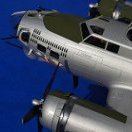


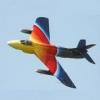
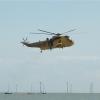
.thumb.jpg.cfc129272ffec824439b15e6013d5952.jpg)
